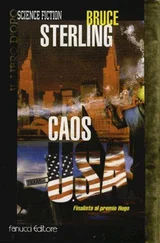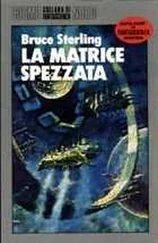Bruce Sterling - Essays. FSF Columns
Здесь есть возможность читать онлайн «Bruce Sterling - Essays. FSF Columns» весь текст электронной книги совершенно бесплатно (целиком полную версию без сокращений). В некоторых случаях можно слушать аудио, скачать через торрент в формате fb2 и присутствует краткое содержание. Жанр: Фантастика и фэнтези, на английском языке. Описание произведения, (предисловие) а так же отзывы посетителей доступны на портале библиотеки ЛибКат.
- Название:Essays. FSF Columns
- Автор:
- Жанр:
- Год:неизвестен
- ISBN:нет данных
- Рейтинг книги:3 / 5. Голосов: 1
-
Избранное:Добавить в избранное
- Отзывы:
-
Ваша оценка:
- 60
- 1
- 2
- 3
- 4
- 5
Essays. FSF Columns: краткое содержание, описание и аннотация
Предлагаем к чтению аннотацию, описание, краткое содержание или предисловие (зависит от того, что написал сам автор книги «Essays. FSF Columns»). Если вы не нашли необходимую информацию о книге — напишите в комментариях, мы постараемся отыскать её.
Essays. FSF Columns — читать онлайн бесплатно полную книгу (весь текст) целиком
Ниже представлен текст книги, разбитый по страницам. Система сохранения места последней прочитанной страницы, позволяет с удобством читать онлайн бесплатно книгу «Essays. FSF Columns», без необходимости каждый раз заново искать на чём Вы остановились. Поставьте закладку, и сможете в любой момент перейти на страницу, на которой закончили чтение.
Интервал:
Закладка:
Perhaps we like robots better in 1993 because we can't have them in real life. In today's world, any robot politely and unquestioningly "obeying human orders" in accord with Asimov's Three Laws of Robotics would face severe difficulties. If it were worth even half of what the painted-tin Thunder Robot is worth, then a robot streetsweeper, doorman or nanny would probably be beaten sensorless and carjacked by a gang of young human unemployables. It's a long way back to yesterday's tomorrows.
"Watching the Clouds"
In the simmering depths of a Texas summer, there are few things more soothing than sprawling on a hillside and watching the clouds roll by. Summer clouds are especially bright and impressive in Texas, for reasons we will soon come to understand-- and anyhow, during a Texas summer, any activity more strenuous than lying down, staring at clouds, and chewing a grass-stem may well cause heat-stroke.
By the early nineteenth century, the infant science of meteorology had freed itself from the ancient Aristotelian dogma of vapors, humors, and essences. It was known that the atmosphere was made up of several different gases. The behavior of gases in changing conditions of heat, pressure and density was fairly well understood. Lightning was known to be electricity, and while electricity itself remained enormously mysterious, it was under intense study. Basic weather instruments -- the thermometer, barometer, rain gauge, and weathervane -- were becoming ever more accurate, and were increasingly cheap and available.
And, perhaps most importantly, a network of amateur natural philosophers were watching the clouds, and systematically using instruments to record the weather.
Farmers and sailors owed their lives and livelihoods to their close study of the sky, but their understanding was folkloric, not basic. Their rules of thumb were codified in hundreds of folk weather-proverbs. "When clouds appear like rocks and towers/ the earth's refreshed with frequent showers." "Mackerel skies and mares' tails/ make tall ships carry low sails." This beats drowning at sea, but it can't be called a scientific understanding.
Things changed with the advent of Luke Howard, "the father of British meteorology." Luke Howard was not a farmer or sailor -- he was a Quaker chemist. Luke Howard was born in metropolitan London in 1772, and he seems to have spent most of his life indoors in the big city, conducting the everyday business of his chemist's shop.
Luke Howard wasn't blessed with high birth or a formal education, but he was a man of lively and inquiring mind. While he respected folk weather-wisdom, he also regarded it, correctly, as "a confused mass of simple aphorisms." He made it his life's avocation to set that confusion straight.
Luke Howard belonged to a scientific amateur's club in London known as the Askesian Society. It was thanks to these amateur interests that Howard became acquainted with the Linnaean System. Linnaeus, an eighteenth-century Swedish botanist, had systematically ranked and classified the plants and animals, using the international language of scholarship, Latin. This highly useful act of classification and organization was known as "modification" in the scientific terminology of the time.
Though millions of people had watched, admired, and feared clouds for tens of thousands of years, it was Luke Howard's particular stroke of genius to recognize that clouds might also be classified.
In 1803, the thirty-one-year-old Luke Howard presented a learned paper to his fellow Askesians, entitled "On the Modifications of Clouds, and On the Principles of Their Production, Suspension, and Destruction."
Howard's speculative "principles" have not stood the test of time. Like many intellectuals of his period, Howard was utterly fascinated by "electrical fluid," and considered many cloud shapes to be due to static electricity. Howard's understanding of thermodynamics was similarly halting, since, like his contemporaries, he believed heat to be an elastic fluid called Caloric.
However, Howard's "modifications" -- cirrus, cumulus, and stratus -- have lasted very successfully to the present day and are part of the bedrock of modern meteorology. Howard's scholarly reputation was made by his "modifications," and he was eventually invited to join the prestigious Royal Society. Luke Howard became an author, lecturer, editor, and meteorological instrument- maker, and a learned correspondent with superstars of nineteenth-century scholarship such as Dalton and Goethe. Luke Howard became the world's recognized master of clouds. In order to go on earning a living, though, the father of British meteorology wisely remained a chemist.
Thanks to Linnaeus and his disciple Howard, cloud language abounds in elegant Latin constructions. The "genera" of clouds are cirrus, cirrocumulus, cirrostratus; altocumulus, altostratus, nimbostratus; stratocumulus, cumulus and cumulonimbus.
Clouds can also be classified into "species," by their peculiarities in shape and internal structure. A glance through the World Meteorological Organization's official *International Cloud Atlas* reveals clouds called: fibratus, uncinus, spissatus, castellanus, floccus, stratiformus, nebulosus, lenticularis, fractus, humilis, mediocris, congestus, calvus, and capillatus.
As if that weren't enough, clouds can be further divvied-up into "varieties," by their "special characteristics of arrangement and transparency": intortus, vertebratus, undulatus, radiatus, lacunosis, duplicatus, translucidus, perlucidus and opacis.
And, as a final scholastic fillip, there are the nine supplementary features and appended minor cloud forms: incus, mammatus, virga, praecipitatio, arcus, tuba,pileus, vella, and pannus.
Luke Howard had quite a gift for precise language, and sternly defended his use of scholar's Latin to other amateurs who would have preferred plain English. However elegant his terms, though, Howard's primary insight was simple. He recognized that most clouds come in two basic types: "cumulus" and "stratus," or heaps and layers.
Heaps are commoner than layers. Heaps are created by local rising air, while layers tend to sprawl flatly across large areas.
Water vapor is an invisible gas. It's only when the vapor condenses, and begins to intercept and scatter sunlight as liquid droplets or solid ice crystals, that we can see and recognize a "cloud." Great columns and gushes of invisible vapor continue to enter and leave the cloud throughout its lifetime, condensing within it and evaporating at its edges. This is one reason why clouds are so mutable -- clouds are something like flames, wicking along from candles we can't see.
Who can see the wind? But even when we can't feel wind, the air is always in motion. The Earth spins ponderously beneath its thin skin of atmosphere, dragging air with it by gravity, and arcing wind across its surface with powerful Coriolis force. The strength of sunlight varies between pole and equator, powering gigantic Hadley Cells that try to equalize the difference. Mountain ranges heave air upward, and then drop it like bobsleds down their far slopes. The sunstruck continents simmer like frying pans, and the tropical seas spawn giant whirlpools of airborne damp.
Water vapor moves and mixes freely with all of these planetary surges, just like the atmosphere's other trace constituents. Water vapor, however, has a unique quality -- at Earth's temperatures, water can become solid, liquid or gas. These changes in form can store, or release, enormous amounts of heat. Clouds can power themselves by steam.
A Texas summer cumulus cloud is the child of a rising thermal, from the sun-blistered Texan earth. Heated air expands. Expanding air becomes buoyant, and rises. If no overlying layer of stable air stops it from rising, the invisible thermal will continue to rise, and cool, until it reaches the condensation level. The condensation level is what gives cumulus clouds their flat bases -- to Luke Howard, the condensation level was colorfully known as "the Vapour Plane." Depending on local heat and humidity, the condensation level may vary widely in height, but it's always up there somewhere.
Читать дальшеИнтервал:
Закладка:
Похожие книги на «Essays. FSF Columns»
Представляем Вашему вниманию похожие книги на «Essays. FSF Columns» списком для выбора. Мы отобрали схожую по названию и смыслу литературу в надежде предоставить читателям больше вариантов отыскать новые, интересные, ещё непрочитанные произведения.
Обсуждение, отзывы о книге «Essays. FSF Columns» и просто собственные мнения читателей. Оставьте ваши комментарии, напишите, что Вы думаете о произведении, его смысле или главных героях. Укажите что конкретно понравилось, а что нет, и почему Вы так считаете.



